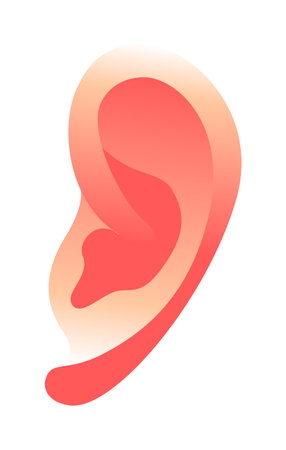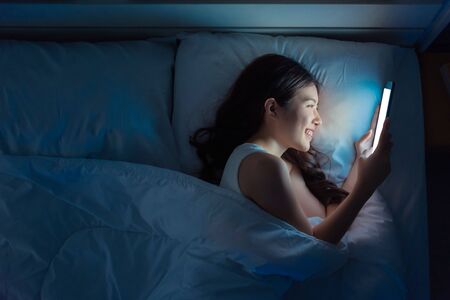1. Introduction to Blue Light and Its Sources
Blue light is a segment of the visible light spectrum, with wavelengths ranging from 400 to 495 nanometres. Naturally, it is most prominently emitted by the sun, playing an essential role in regulating our circadian rhythms and supporting alertness during daylight hours. However, in recent years, our exposure to artificial blue light has soared, thanks to widespread use of digital devices such as smartphones, tablets, computers, and LED lighting. In the UK, where over 90% of adults report daily use of screens for work or leisure, understanding blue lights sources is more relevant than ever. As the British weather often keeps us indoors, reliance on electronic devices grows—making it increasingly important to examine how this modern lifestyle might affect our sleep quality and overall wellbeing. This article provides a comprehensive overview of blue light and explores why its impact on sleep deserves special attention within the UK context.
2. The Science Behind Blue Light and Sleep
Blue light, which is prevalent in daylight as well as emitted by electronic devices like smartphones, tablets, and LED lighting, plays a significant role in regulating our body’s internal clock, also known as the circadian rhythm. The circadian rhythm influences when we feel awake and when we get sleepy, aligning largely with the natural cycle of day and night. Exposure to blue light during the evening hours can disrupt this rhythm, making it harder for us to fall asleep and achieve high-quality rest.
When blue light enters our eyes, it suppresses the production of melatonin—a hormone that signals to the body that it’s time to wind down for sleep. Reduced melatonin levels delay sleep onset and can negatively impact overall sleep quality. Studies from UK-based research institutions such as the University of Surrey have shown that individuals exposed to artificial blue light at night experience shorter sleep durations and report feeling less refreshed upon waking.
How Blue Light Affects the Body
| Factor | Impact of Blue Light Exposure | UK-Based Study Reference |
|---|---|---|
| Circadian Rhythm | Disruption leads to difficulty falling asleep | University of Manchester (2019) |
| Melatonin Production | Suppressed, delaying drowsiness | University of Surrey Sleep Research Centre (2017) |
| Sleep Quality | Poorer overall rest and reduced REM sleep phases | NHS Digital Health Report (2021) |
The UK Context: Long Evenings and Screen Use
The UK experiences extended daylight hours during summer months, which naturally increases exposure to blue light late into the evening. Coupled with widespread use of digital devices after sunset, Britons may be particularly susceptible to blue-light-induced sleep disturbances. According to an NHS survey, over 60% of UK adults report using screens within an hour before bed, further compounding the issue.
Summary: Balancing Light for Better Rest
Understanding how blue light interacts with your body’s natural rhythms empowers you to make healthier choices around bedtime routines. By considering both environmental factors unique to the UK and your daily habits, you can take meaningful steps towards better, more restorative sleep.

3. Common Blue Light Sources in Everyday British Life
In our fast-paced, digitally driven lives across the UK, blue light exposure has become an unavoidable part of daily routine. From the moment we wake up to the time we settle down for a good night’s rest, various devices and habits prevalent in British homes contribute to how much blue light we encounter.
Smartphones and Tablets: Constant Companions
The use of smartphones and tablets is virtually ubiquitous throughout the UK. Whether it’s checking the news on the BBC app during your morning commute, catching up with friends on WhatsApp, or scrolling through Instagram before bed, these portable screens emit significant amounts of blue light. It’s not just about work or staying connected—these devices have seamlessly woven themselves into our leisure time as well.
Telly Time: The Evening Wind Down
For many Britons, unwinding with a bit of telly after a long day is almost a ritual. Streaming series on Netflix, watching football matches, or keeping up with soaps like EastEnders means spending extended periods in front of LED televisions—another major source of blue light. This habit, especially when indulged in late into the evening, can inadvertently disrupt natural sleep rhythms.
LED Lighting: Illuminating Modern Homes
With energy efficiency and longevity in mind, more UK households are opting for LED lighting throughout their homes. While LEDs are a sustainable choice, they also emit more blue light compared to traditional incandescent bulbs. From kitchen downlights to bedside lamps, these sources collectively increase overall exposure as families go about their nightly routines.
Laptops and Desktop Monitors: The New Workstations
Remote work and online learning have made laptops and desktop monitors staple features in British homes. Extended screen time for emails, video calls, and digital coursework further adds to cumulative blue light levels—often extending well past typical working hours.
Everyday Habits That Add Up
It’s not just about individual gadgets but also the way they’re integrated into daily life. Late-night social media browsing, binge-watching favourite shows, and even reading e-books on digital devices all play their part. These habits are deeply rooted in contemporary British culture and collectively contribute to heightened blue light exposure—ultimately impacting sleep quality if left unchecked.
Sleep Patterns and the British Lifestyle
Understanding how blue light exposure intersects with sleep patterns in the UK requires a close look at the unique routines and cultural habits that shape daily life. In Britain, work schedules, school start times, and even leisure activities are all factors that influence when and how people wind down for rest. Many Britons experience long working hours, frequent commutes, and late-night digital device usage—habits that can disrupt circadian rhythms, especially when combined with the prevalent grey skies and limited daylight during winter months.
The Role of Technology in Daily Life
From streaming your favourite BBC dramas to scrolling through social media before bed, screen time is a staple of modern British culture. The widespread use of smartphones, tablets, and computers—often right up until bedtime—means that blue light exposure is at its peak during the critical pre-sleep period. This can delay the natural release of melatonin, making it more challenging to fall asleep at a reasonable hour.
Common Sleep Challenges in the UK
| Challenge | Description | Connection to Blue Light |
|---|---|---|
| Late Bedtimes | Many adults and teens go to bed later due to work or entertainment | Increased evening screen use suppresses melatonin production |
| Difficulty Waking Up | Especially common on dark winter mornings | Poor sleep quality from disrupted rhythms leads to grogginess |
| Reduced Sleep Duration | Busy schedules often cut into recommended sleep hours | Delayed sleep onset from blue light shortens total sleep time |
Cultural Habits Affecting Sleep
The British tradition of evening television viewing, as well as late dinners or pub visits, can further push back bedtime. School children face early starts despite going to bed later due to homework or online activities. Collectively, these practices mean many people in the UK are not getting enough restorative sleep, a problem exacerbated by high blue light exposure after sunset.
5. Practical Strategies for Reducing Blue Light Exposure
For many people in the UK, digital devices are a staple of daily life, making blue light exposure almost unavoidable. Fortunately, there are practical and locally relevant strategies you can adopt to minimise its impact and support healthier sleep patterns.
Utilise Blue Light Filters and Night Modes
Most smartphones, tablets, and computers now offer built-in blue light filters or “night mode” settings. Enabling these features in the evening can help reduce blue light emission from your screens. For even greater protection, consider investing in physical screen protectors or glasses with blue light filtering lenses, which are readily available from high-street opticians such as Specsavers or Boots Opticians.
Adjust Your Home Lighting
The type of lighting used at home also plays a significant role in blue light exposure. Opt for warmer-toned LED bulbs in living spaces and bedrooms, particularly during the evening hours. Dimmable lamps or smart bulbs allow you to tailor the brightness and warmth of your lighting to suit the time of day, helping signal to your body that it’s time to wind down.
Establish a Digital Curfew
UK health experts, including the NHS, recommend limiting screen time at least one hour before bed. Creating a bedtime routine that encourages winding down with non-screen activities—such as reading a book, listening to calming music, or gentle stretching—can make a noticeable difference to your sleep quality.
Take Breaks During Screen Use
If work or study requires prolonged use of digital devices, try following the 20-20-20 rule: every 20 minutes, look away from your screen at something 20 feet away for at least 20 seconds. This simple practice helps reduce eye strain and may also lessen your overall blue light exposure.
Follow UK Health Guidelines
The NHS and Sleep Council both highlight the importance of good sleep hygiene. Alongside reducing blue light exposure, they suggest keeping regular sleep hours and ensuring your bedroom is dark and quiet. Blackout curtains and eye masks can be particularly helpful during lighter summer months common across the UK.
Summary
By taking small but consistent steps—embracing technology wisely, modifying home lighting, setting digital boundaries, and following trusted UK health advice—you can limit blue light’s effect on your sleep while maintaining balance in our modern, tech-driven lives.
6. When to Seek Advice: Knowing if Blue Light Is Affecting You
While many of us are aware that blue light from our devices may impact our sleep, it can be tricky to know when it’s time to take action. If you regularly find yourself tossing and turning at night, waking up groggy despite a full night’s rest, or experiencing persistent headaches and eye strain after screen use, these could be signs that blue light is interfering with your natural sleep patterns.
Recognising the Warning Signs
It’s normal to have an occasional restless night, but if poor sleep becomes a pattern—especially after late-night scrolling or binge-watching—it’s worth paying attention. Signs may include:
- Difficulty falling or staying asleep
- Feeling unusually tired during the day
- Mood swings or irritability
- Trouble concentrating at work or school
- Increased reliance on caffeine to stay alert
If you notice these symptoms persist even after trying simple solutions like reducing screen time in the evening or using blue light filters, it could indicate a deeper issue.
When Should You Consult a Professional?
If self-help strategies don’t seem to make a difference, or if your sleep troubles begin to significantly affect your daily life, it might be time to seek advice from a professional. In the UK, your local GP is often the first port of call. They can help rule out other causes of sleep disturbance and provide guidance tailored to your needs. The NHS also offers resources on sleep hygiene and managing screen use. It’s especially important to seek help if you experience severe insomnia, ongoing fatigue, or mental health changes linked to poor sleep.
A Balanced Approach for Better Sleep
Remember, everyone’s tolerance for blue light exposure is different. Paying attention to your body’s signals and seeking support when needed can help you regain control over your sleep and wellbeing. Don’t hesitate to make use of local resources—whether it’s consulting your GP or exploring NHS sleep guides—to ensure you’re looking after both your digital habits and overall health.

